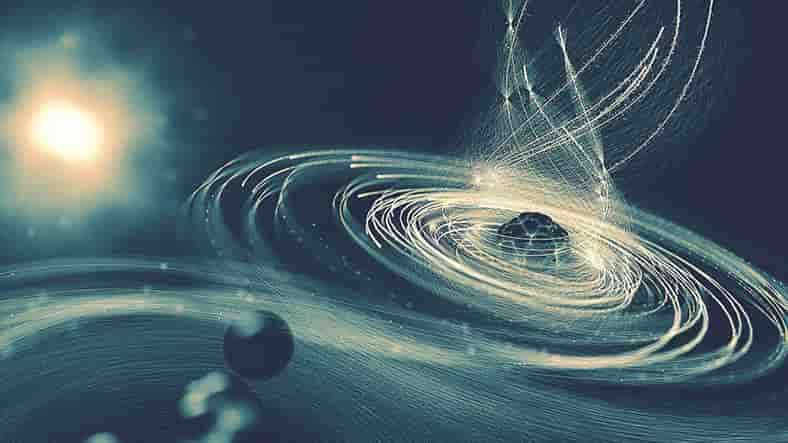Synthetic black holes vs real black holes
A study led by the University of Amsterdam showed that the elusive radiation from a black hole can be studied by mimicking it in the laboratory.Black holes are the most extreme objects in the universe, and a great many Mass is packed into such a small space that not even light can escape its gravitational pull if you get close enough.
Understanding black holes is key to deciphering the most fundamental laws that govern the universe. Because they represent the limits of his two most tested theories in physics, general relativity. – Time according to the theory of quantum mechanics, which explains physics on huge bodies and the smallest length scales. To fully explain black holes, these two theories must be combined to form a theory of quantum gravity.
glowing black hole
To achieve this goal, we need to focus on what manages to escape the black hole, not what is swallowed. The event horizon is the immaterial boundary around every black hole that has no path beyond it. However, Stephen Hawking famously discovered that every black hole must emit a small amount of thermal radiation due to small quantum fluctuations around its horizon.
Unfortunately, this radiation has never been detected directly. The amount of Hawking radiation emitted by each black hole is predicted to be so small that it is impossible (with current technology) to detect it among the emissions from all other space objects.
Alternatively, can we study the mechanisms underlying the production of Hawking radiation here on Earth? Researchers from the University of Amsterdam and IFW Dresden investigated this. And the answer is an exciting “yes”.
Laboratory black hole
“We wanted to use the powerful tools of condensed matter physics to study the unreachable physics of these incredible objects, black holes,” says author Lotte Mertens. .
To do this, the researchers looked at a model based on a one-dimensional chain of atoms in which electrons can “hop” from one atomic position to the next. The distortion of spacetime due to the presence of black holes is mimicked by adjusting the ease with which electrons bounce between positions. With appropriately varying jump probabilities along the chain, electrons moving from one end of the chain to the other behave like matter approaching the horizon of a black hole. Also, similar to Hawking radiation, the model system has a measurable thermal excitation in the presence of synthetic horizons.
Learning by analogy
Despite the lack of real gravity in the model system, the inclusion of this synthetic horizon provides important insights into black hole physics. For example, the fact that the simulated Hawking radiation is thermal only for a selection of certain spatial variations in jump probabilities (meaning that the system appears to be at a constant temperature) is It suggests that the actual Hawking radiation is also thermal in certain situations. Just pure heat.
Furthermore, Hawking radiation occurs only when the model system starts with no spatial variation in jump probabilities, mimicking a flat spacetime without a horizon before transforming into one hosting a synthetic black hole. . Thus, the emergence of Hawking radiation requires either a change in the space-time warp, or a change in the perception of that warp by an observer seeking radiation.
Finally, Hawking radiation requires part of the chain to exist beyond the synthetic horizon. This means that the presence of thermal radiation is closely related to the quantum mechanical properties of entanglement between bodies on either side of the horizon.
The model is so simple that it can be implemented in various experimental designs. These could be tunable electronic systems, spin chains, ultracold atoms, or optical experiments. Bringing a black hole into the laboratory brings us one step closer to understanding the interaction of gravity and quantum mechanics, and to understanding the theory of quantum gravity.
This study was published in Physical Review Research.
Quotation: https://phys.org/news/2022-11-synthetic-black-holes-real.html
